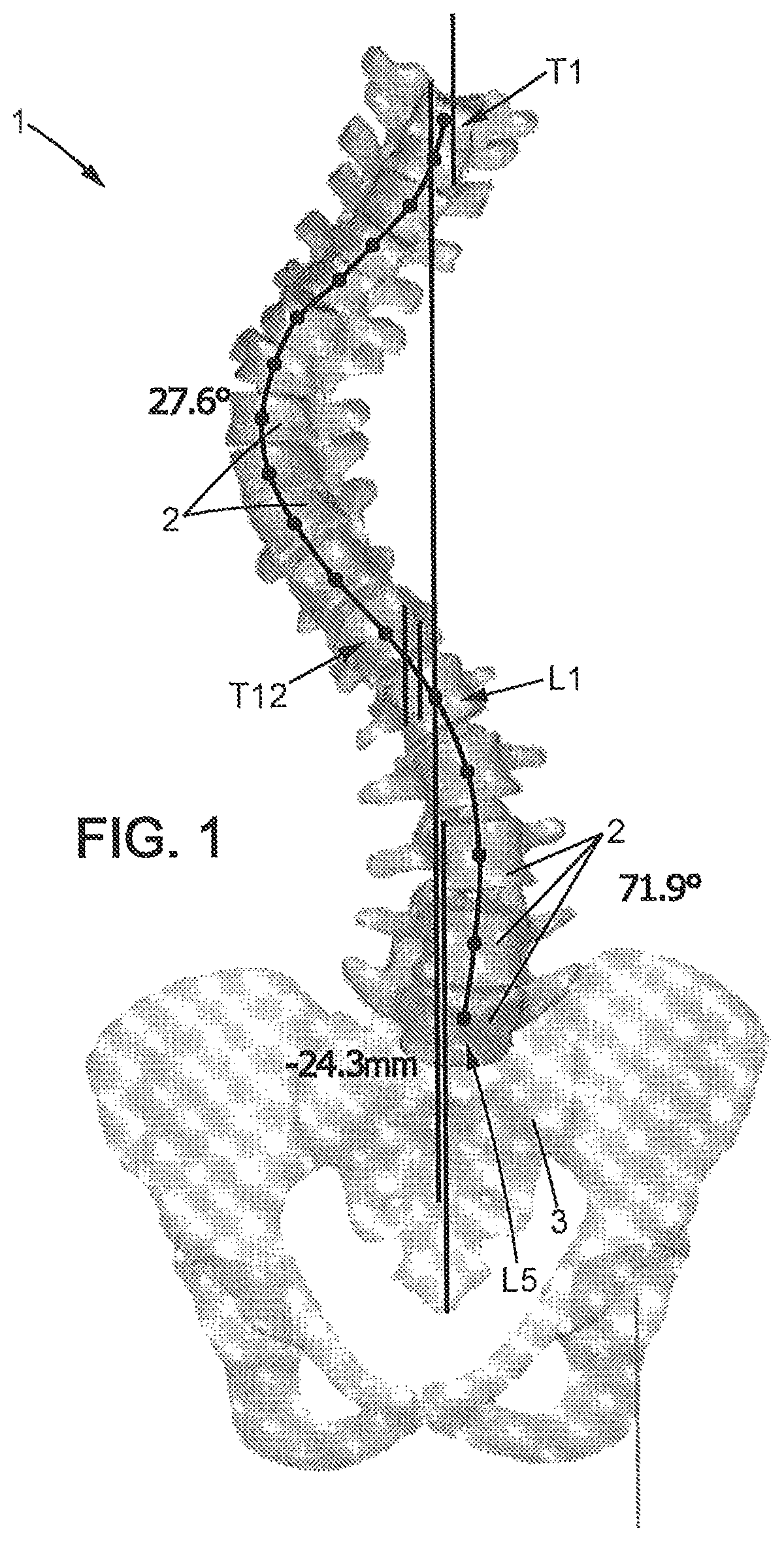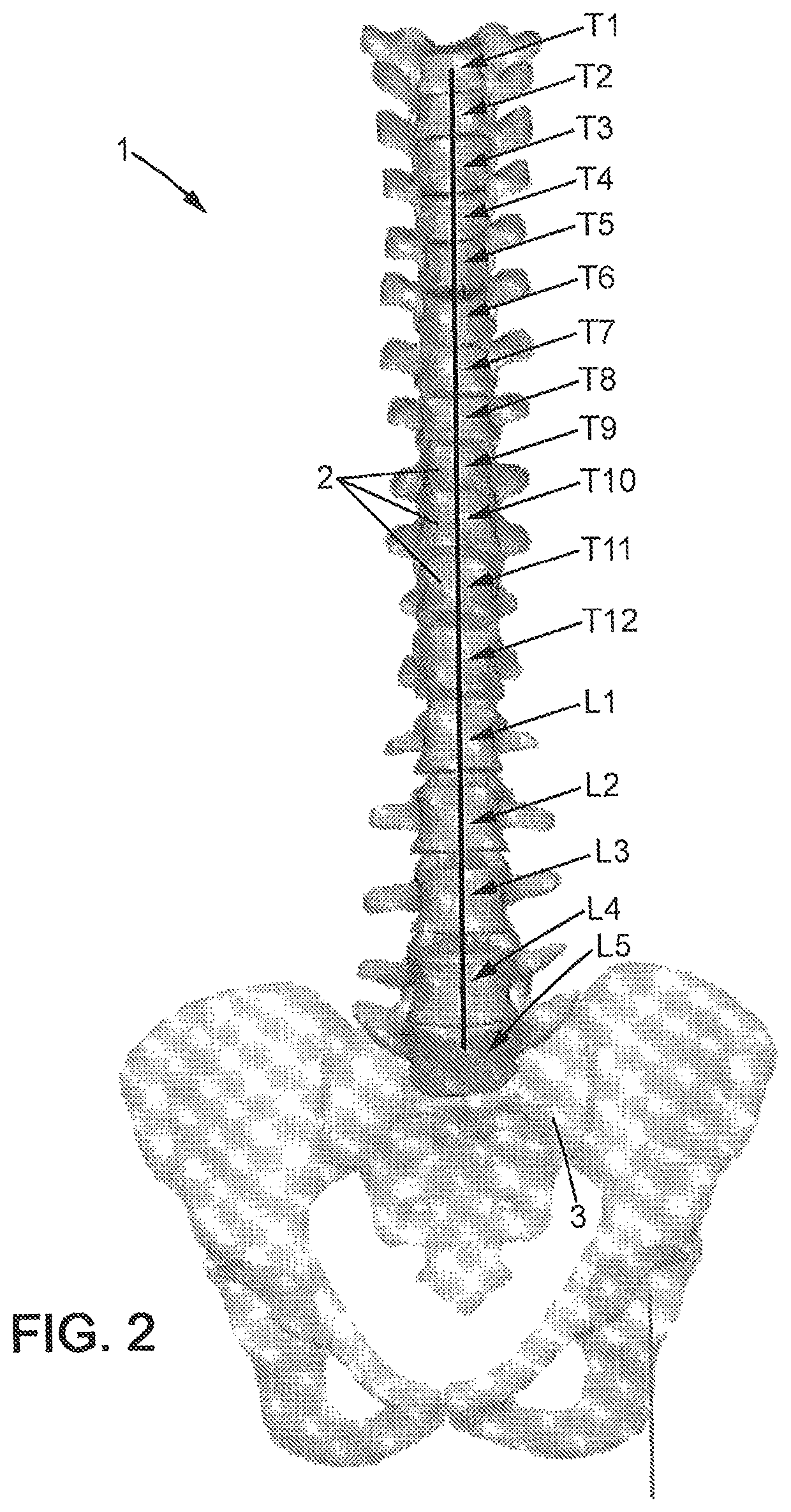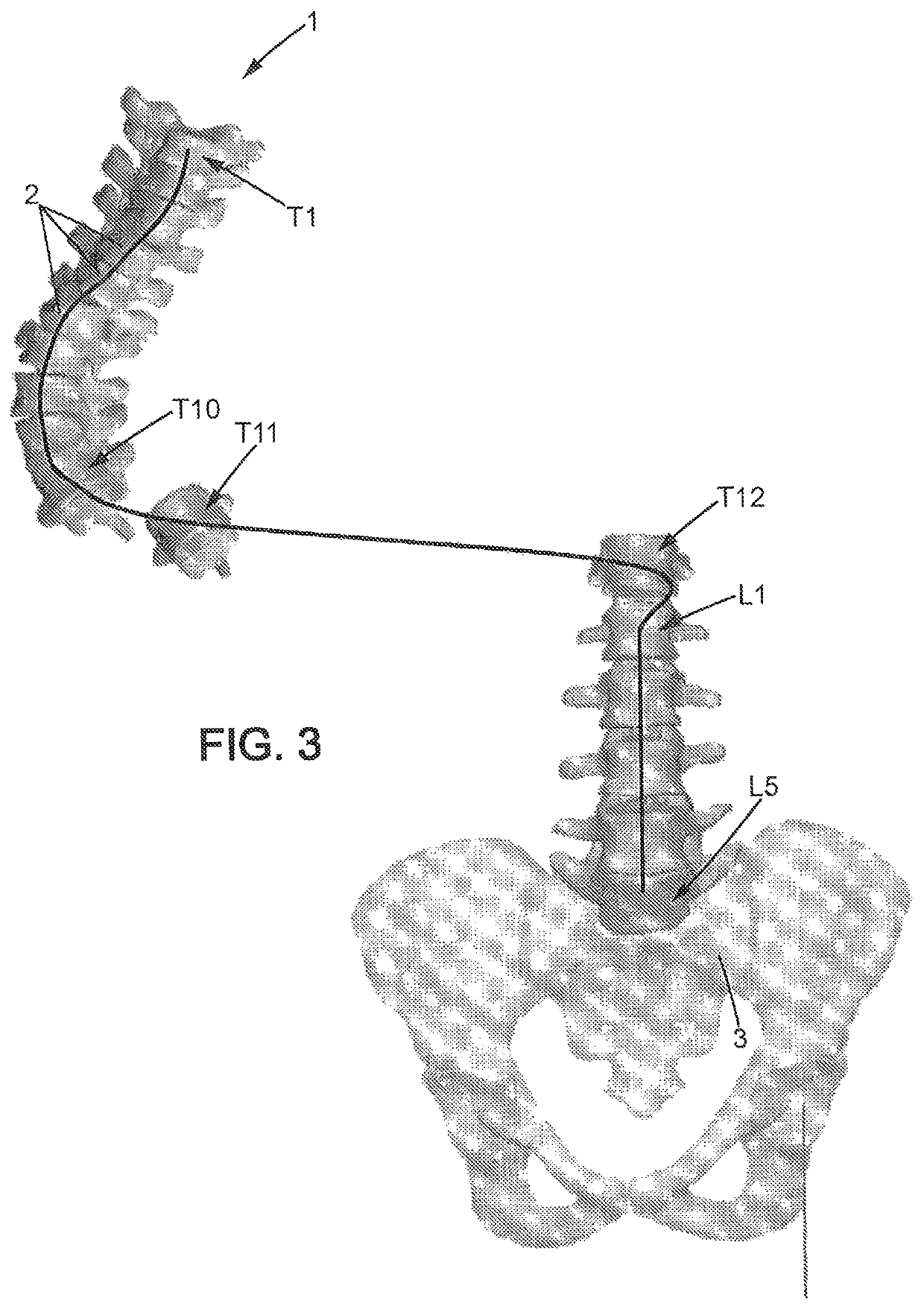Method of preoperative planning to correct spine misalignment of a patient
a patient and preoperative planning technology, applied in the field of patient preoperative planning to correct spine misalignment, to achieve the effect of quick and efficient convergence of thoracic kyphosis
- Summary
- Abstract
- Description
- Claims
- Application Information
AI Technical Summary
Benefits of technology
Problems solved by technology
Method used
Image
Examples
Embodiment Construction
[0048]FIG. 1 shows a frontal patient spine view, the patient suffering from scoliosis, allowing performance of a step of the method of preoperative planning according to an embodiment of the invention.
[0049]A patient spine 1 comprises vertebrae 2 and is ended by pelvis 3. Vertebrae 2 comprise thoracic vertebrae T1 to T12 and lumbar vertebrae L1 to L5. A sane spine 1 should appear as vertical in the coronal plan. Here, one can see that the spine 1 is heavily curved toward left of FIG. 1 in its upper part, corresponding to thoracic vertebrae 2, and slightly curved toward right of FIG. 1 in its lower part, corresponding to lumbar vertebrae 2. This means that represented spine 1 suffers from a disease called scoliosis. This means that represented spine 1 should be made straight in coronal plan. Therefore, imaged thoracic vertebrae T1 to T12 should be moved to the right of FIG. 1, whereas imaged lumbar vertebrae L1 to L5 should be moved to the left of FIG. 1.
[0050]FIG. 2 shows a frontal ...
PUM
 Login to View More
Login to View More Abstract
Description
Claims
Application Information
 Login to View More
Login to View More - R&D
- Intellectual Property
- Life Sciences
- Materials
- Tech Scout
- Unparalleled Data Quality
- Higher Quality Content
- 60% Fewer Hallucinations
Browse by: Latest US Patents, China's latest patents, Technical Efficacy Thesaurus, Application Domain, Technology Topic, Popular Technical Reports.
© 2025 PatSnap. All rights reserved.Legal|Privacy policy|Modern Slavery Act Transparency Statement|Sitemap|About US| Contact US: help@patsnap.com



